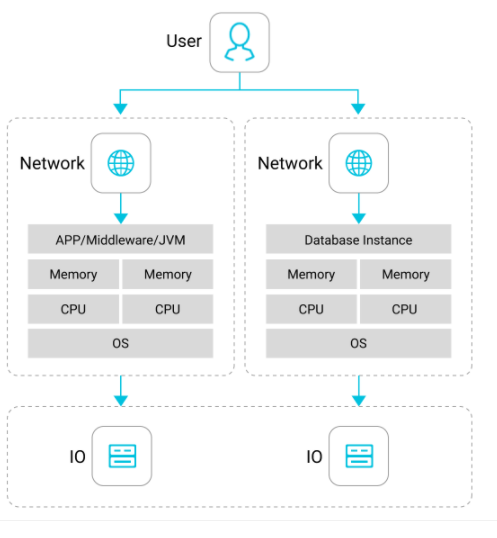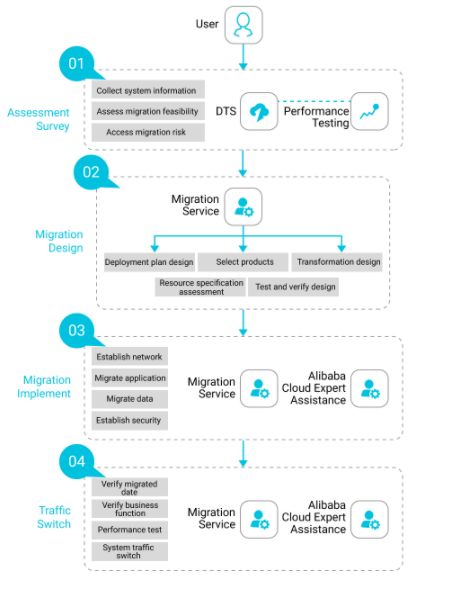By Shantanu Kaushik
Building a Hybrid Cloud solution is another way of enabling business transformation. Just like any other type of change, business transformation with the help of a hybrid cloud will also account for the technological expansion and future-readiness for any organizational goals.
Starting anything new or moving to a new way of doing things might lead to chaos and unanticipated scenarios if done in haste. Having a clear transformation strategy in place will lead to a better implementation of the architectural design and use-case scenarios. This helps achieve organizational goals for business/enterprise evolution. Migrating your already established architecture requires careful consideration of your expectations from this move and how well it will work out for you.
Let’s discuss some practices that will help you build a better hybrid cloud solution.
Building anything new on the foundation of an already existing and authenticated system of doing things requires a good analysis of the current system that is already working for you. As a strategist, the core functionality that your organization operates under must be maintained to ensure business excellence.
Business continuity is a great benefit of the hybrid cloud solution. While you are making the shift from traditional computing solutions, you need to make sure to incorporate the most functional bits from your current setup into the newly adopted hybrid cloud setup.
Make sure to know what resources are at your disposal when you decide to migrate, such as the choice of operating systems and other resources that you will be provisioning, like the Data Transmission Service or Elastic Compute Service (ECS).

Another practice to keep in check would be the most critical and sensitive data. These are best stored in a private cloud environment. Hybrid Cloud is secure, but it is always recommended to distribute and sort the information depending on the access hierarchy.
Right before you start to make the shift and as the migration process reaches some point of deployment maturity, as the administrator, you need to prepare guidelines for your team to follow and work with. These guidelines could be anything. Some examples are listed below:
With the Hybrid Cloud solution, you get to choose different access levels depending on whether your service is using the public cloud or private cloud. This makes assigning policies and rules related to your setup an essential practice.
A hybrid cloud has more capabilities and resources than a traditional setup.
The first thing to consider here is, “What do you want your new solution to extract?” Let’s elaborate on this a little. Business expansion requires better utilization of resources and for you to integrate better tools and practices. The expansion will be a success if you can extract more value out of your business compared to what you had with a traditional practice.
You may plan to utilize the DevOps solution to develop and deploy better applications. DevOps will enable a faster and more reliable software development lifecycle.
Migrating to a diverse platform may be one of the many factors of your move. However, one of the prime movers is the cost effectiveness of a solution. Building a hybrid cloud solution brings along architectural changes that reduce cost and increases performance and reliability.
Careful calculations should be planned to ensure a positive outcome. Projections based on independent data and planning with your cloud provider is among the primary practices that the strategist must follow.
A hybrid cloud offers a lot of cost-cutting solutions compared to a traditional IT setup. From less physical resource orchestration to the auto scaling of resources with Alibaba Cloud, there are numerous advantages to make the shift. The most important thing to remember is the cost effective range with short- and long-term expense scenarios.
Migration is just one part of the equation. The first step is making sure your team understands the true capabilities of a hybrid cloud and its related services you are planning to adopt. The second and third steps are strategy building and training sessions to keep your team up-to-date and ready to take on challenges.
On a side-note, let’s take this opportunity and talk about developing skills as a DevOps engineer. Did you know that Alibaba provides chances to become a certified DevOps engineer? This will allow you to learn and apply a better approach to your DevOps implementation! If you’re interested, check out this link and move forward in your learning path.
Make sure to follow these practices for team readiness:
Migrations are never easy. All-end migration at once may lead to chaos. It all depends on how big your team is and how large an enterprise you are handling. Regardless of your specific factors, a step-by-step migration or implementation of the hybrid cloud solution is highly recommended. Alibaba Cloud provides expert assistance with the migration service. Whenever you decide to migrate, there is a team of experts ready to help you with every step of the process. This is one factor that makes all the difference.

Let’s discuss some practices and stages of migration you could follow:
Alibaba Cloud provides you with tools, such as the cloud monitor, that help monitor your service 24x7. The hybrid cloud is secure, but close monitoring of resource and traffic usage scenarios is among the best practices to record metrics and data related to service outages or peak hours.
Public Cloud workload share (Cloud Bursting) should be monitored and maintained to ensure that no sensitive information is being shared without proper security measures.
Remember, only cloud providers can give you with the tools and services for uninterrupted service. As an administrator, you need to build using these services and ensure that you work your way up to achieve solution maturity.
Building a Hybrid Cloud solution requires careful planning. Every step in this process must be a part of a pre-defined strategy. Execution at every step must be handled with the utmost consideration to your available resources and core business values. Documentation at every step is the key to a successful build.
If you decide to implement using Alibaba Cloud services, you will have industry-leading tools and a vast support network to help you at every step. A strong cloud partner relationship is the most important factor in the total hybrid cloud build process.
Make sure to manage your resources well and secure all end-points.
The views expressed herein are for reference only and don't necessarily represent the official views of Alibaba Cloud.

2,599 posts | 764 followers
FollowAlibaba Clouder - May 4, 2021
Alibaba Clouder - November 3, 2020
Alibaba Clouder - March 11, 2021
Alibaba Clouder - March 11, 2021
Alibaba Cloud Native - May 23, 2022
Alibaba Clouder - October 29, 2020

2,599 posts | 764 followers
Follow Cloud Migration Solution
Cloud Migration Solution
Secure and easy solutions for moving you workloads to the cloud
Learn More ISV Solutions for Cloud Migration
ISV Solutions for Cloud Migration
Alibaba Cloud offers Independent Software Vendors (ISVs) the optimal cloud migration solutions to ready your cloud business with the shortest path.
Learn More Alibaba Cloud Flow
Alibaba Cloud Flow
An enterprise-level continuous delivery tool.
Learn More DevOps Solution
DevOps Solution
Accelerate software development and delivery by integrating DevOps with the cloud
Learn MoreMore Posts by Alibaba Clouder